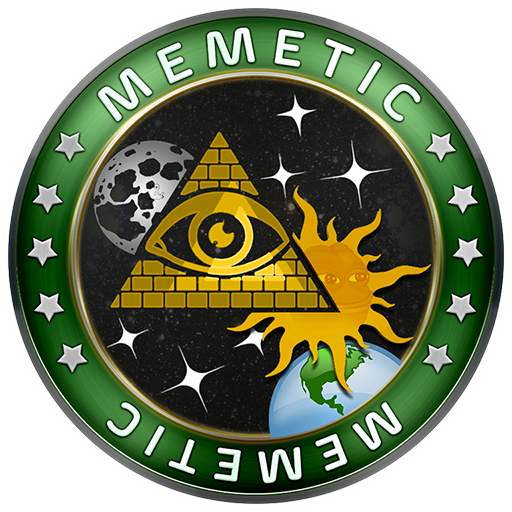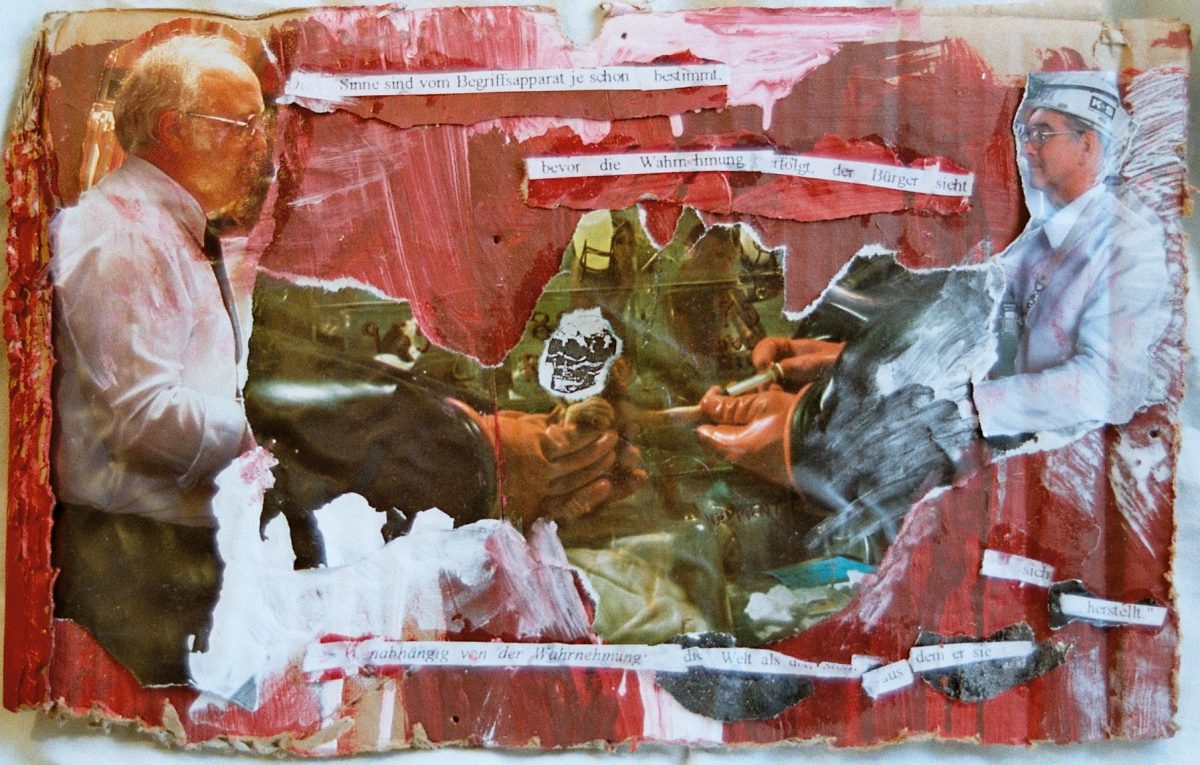“It’s not that what is past casts its light on what is present, or what is present its light on what is past; rather, image is that wherein what has been comes together in a flash with the now to form a constellation. In other words, image is dialectics at a standstill. Only dialectical images are genuine images and the place where one encounters them is language.” Walter Benjamin1
The dialectical image refers to Walter Benjamin’s idea that we need a new visual epistemology, comparable to cinematic montage. This is necessary in order to decode the manifest ambiguities that are embedded in quotidian existence as possible portents of something greater. While this esoteric notion has long baffled Benjamin scholars, we propose to apply his concept to a discussion of memes. Let’s read memes in terms of an emergent cultural logic of social media, where the word “culture” is itself recognized as a highly contested concept.2 We will discuss how memes, like Benjamin’s dialectical image, are characterized by a form of ambiguity one encounters in language.
What did Benjamin mean when he spoke of encountering “genuine images” in language? There is a whole industry of neo-scholastic Benjamin scholarship devoted to this question. Willem Schinkel, for example, developed the concept as a lens through which critical ethical thought might confront the ongoing big issues of modernity.3 Given that Benjamin developed the concepts in the context of his preoccupations with the mass cultural ephemera of 19th century Parisian shopping arcades, it is not inappropriate to apply the concept to lowly objects, in this case memes. A genre of internet humor that combines language and text towards ambiguous ends, memes create endless variations from a relatively limited number of variables.
While memes can be understood as a contemporary form of language, unlike emoticons there is no official body that certifies them. Although Know Your Meme and Encyclopedia Dramatica function to document the process, memes’ meanings are a function of their use, the latter which in turn can be understood as the outcome of cultural negotiations that take place in the flow of everyday language. Unlike in dominant or residual forms of language where meaning can be authoritatively established, part of the point of this emergent form is its inscrutability even its relative meaninglessness – as for example with various broken English forms of netspeak such as used in Polandball of Doggo memes.4
One of the sad things about ‘meme studies’ is how every analysis is compelled to open with the same humiliating ritual of distancing the concept as discussed by Internet researchers from its sociobiological forebear and namesake.5 Having performed this obligatory throat clearing exercise, memes are then described as forms of popular media circulated by users online, where humor is used to positioning the self in relation to others.6 Having overcome its ‘genetic fallacy’ origins, meme studies’ next move is to go beyond the image macro (the axiomatic LOLCat) so as to consider the moving image as well as performance and even vernacular forms of speech all potentially as forms of “memetic media”.7 A niche field of cultural Internet research, recently meme studies has attracted a broader attention for the concern, following the so-called Great Meme War of 2015-16,8 that memes might be an ideal medium for reactionary forms of neo-populism. In what follows our objective is to contemplate this seemingly regressive art in relation to a liberatory theory of image in Benjamin’s spirit.
Benjamin argued that “the realization of dream elements, in the course of waking up, is the paradigm of dialectical thinking” which leads him to claim that “every epoch, in fact, not only dreams the one to follow but, in thus dreaming, precipitates its awakening.”9 Benjamin’s writing is steeped in metaphors of sleep, or awakening and of “the continuous hope for the sudden ‘shock’ and ‘flash’ of insight”.10 His project was to develop a secular messianic iconodulism, a political theology in which the dialectical image was imagined to contain a genuinely revolutionary potential encoded in its esoteric kernel. In the dilapidated corridors of the 19th C Parisian arcades, filled with odd, magic commodities, the march of progress appeared to Benjamin as fractured, opening onto an ur-time of collective redemption that he imagined as embedded within these neglected artifacts.

Benjamin’s arcade thoughts should be understood in relation to the Kabalistic tradition of Judaism, which has a much stricter attitude towards images than Christianity. As a method of occult hermeneutics, Kabbalah believes the world to be readable up to the level of the tiniest detail. Kabbalists have long sought to decode profound messages hidden in the apparently mundane, for example believing the Bible to have meaning precisely encoded into the very font in which it was thought to have been originally written. In this light the dialectical image can be understood as the ‘thing’ that binds together a religious community. Benjamin’s political theology can thus be understood in relation to religion as a transformative speech act that works by renewing attachments to the mundane world rather than though abstract notions of ‘belief’.11 It is this secularized religious notion of transformative speech that we detect in the meme.
For Benjamin collective redemption was the key to utopia, a secular heaven on earth in which the dialectical image would reconnect with the political community of revelation against the cold Weberian diagnosis of disenchantment. As with the critique of instrumental rationality, Benjamin evoked material reality in neo-Platonic terms. In his most famous text he evoked the power of the mechanically reproduced filmic image to “burst this prison-world asunder by the dynamite of the tenth of a second.”12
Weber claimed that disenchantment gave rise to nihilism. While the Benjamin scholar Susan Buck-Morss has noted that this concept of disenchantment has become the central shibboleth of social theory,13 Nigel Thrift protested that the idea of a disenchanting modernity is amongst “the most damaging ideas that has swept the social sciences and humanities.”14 Against social theory’s disenchantment shibboleth, Thrift reads contemporary capitalism in quasi-vitalist terms as a world replete with mystical objects and oceanic experiences. Whereas Benjamin’s point was to find a mythical exit from capitalism, Thrift’s point is to acknowledge the historical emergence of a new spirit of “knowing capitalism” that has effectively incorporated enchantment in its own service. If this is so, then it is arguably a type of ‘disenchanted enchantment’, a form of enchantment in which part of the subject remains ironically distanced and thus “in the know”. In order to fully grasp meme culture we thus first need to appreciate the vitalist logic of the knowledge economy in which memes are embedded.
While most memes are absurdly banal, a subset does explicitly evoke the sublime—as it relates to the ridiculous and the ironic. Exemplary is the concept of ‘kek’, which stands for the magical chaos that is imagined to be the result of the coordinated actions of meme makers using the image of Pepe the Frog, an element used in the 2016 Trump campaign. Although the latter meme may be exceptional, the point is to recognize how it is that memes are imagined in terms of transformative speech acts as well as to acknowledge the centrality of irony. What’s characteristic of the meme speech act is a structure of feeling that we could call ironic reason, which, in distinction to cynicism, allows its spokesperson to purport belief. Whether or not any of this purported belief is in fact serious is unknown and perhaps even unknowable—this is the point it tries to make. Nevertheless, ironic reason seems to create a new opening to notions of awakening. But awakening to what? To answering this question… you have to take the red pill.
Originating from the film The Matrix (1999) the red pill/blue pill meme can be interpreted as a kind of vernacular gloss on Benjaminian idea of awakening. “You take the blue pill—the story ends, you wake up in your bed and believe whatever you want to believe.” Whereas the red pill awakens one to the brutal truth of modernity, in relation to which Benjamin once famously quipped, “There is no document of civilization which is not at the same time a document of barbarism”.15 One need barely ask how Benjamin would react to the film’s Platonic allegory. Of course Benjamin would take the red pill. Somewhat unfortunately the red pill has become a code word for neo-reactionary enlightenment, awakening from the false consciousness of liberal political correctness. In the notion of ‘woke’ the left have their own even more literal equivalent to Benjaminian awakening. But why this ubiquitous preoccupation with awakening, at this particular moment in time? What is it that makes people online want to wake up? And could it be possible that those on the left and on the right have anything in common here? 
As fundamentally different as they are in terms of their diagnosis, both the concept of woke and the red pill can be seen as advocating a violent rupture with the governing system of power, which is also always a system of defining reality. These ideas can be compared to Benjamin’s early concept of “divine violence”, which he developed in dialogue with the far right legal theorist Carl Schmitt. Benjamin evoked divine violence as a messianic rupture with the law, the latter which he characterized in terms of a pagan, repetitive cycle of violence. Akin to the Pauline revolutionary Event that imposes a new order on history, Benjamin’s divine violence is a bloodless separation of law and life that has been called “nonviolent violence”.16
Over the past years, in part through memes, a great many previously disaffected young people became attracted to politics.17 In this regard, the notion of “red-pilling” became a central trope, a kind of right of initiation into a newly imagined political community, the so-called “alt-right”, based almost entirely online and held together in no small part by its sophisticated use of political memes. But while this reactionary concept of awakening functioned to hold this community together so long as it remained mostly ironic and “incorporeal”,18 the community began to crumble when it became increasingly clear that the violence at its core was in fact the authentic brown shirt variety and not some sort of Benjaminian divine violence.19
In finding points of connection between new subcultural forms of online radicalism and Benjamin’s ideas concerning revolutionary political change, we might also look to how Benjamin conceptualized temporality. If we take the position that memes are a medium for a secularized form of esoteric-cum-revolutionary awakening, then how does this process work? With the acceleration of modernity having brought about a permanent condition of real-time, perhaps we might consider the contemporary ‘memified’ trope of awakening as a (sometimes violent) attempt to punctuate the flow of real-time.
At the end of his tragically short life, Benjamin refigured his ideas of secular revelation in temporal terms, what he called Jetztzeit (now-time).20 Following this idea, we might say that in their moment circulation memes in a sense represent the Benjaminian “flash” that occurs from the dialectical juxtaposition of now-time, in all its redemptive capacity, with the cast-off trivia of mass culture—from the detritus of which memes are constructed and to which they return. In his search for the messianic now-time in the debris of the past Benjamin helped to inaugurate a new way of seeing as expressed with great poetry by the land artist Robert Smithson when he declared: “I am convinced that the future is lost somewhere in the dumps of the non-historical past; it is in yesterday’s newspapers, in the jejune advertisements of science-fiction movies, in the false mirror of our rejected dreams. Time turns metaphors into things, and stacks up in cold rooms, or places them in the celestial play grounds of the suburbs.”21
Benjamin spoke of a temporal nucleus of the dialectical image in which a conflict plays itself out between the facticity of things and their utopian potential, between what he called after-history and fore-history. As renowned Benjamin scholar Susan Buck-Morss writes of this concept: “In the traces left by the object’s after-history, the conditions of its decay and the manner of its cultural transmission, the utopian images of past objects can be read in the present as truth.”22 In order for a piece of this utopian past to make contact with the present, in this final text Benjamin wrote that it had to be “blasted out of the continuum of history”.23 Insofar as memes are characterized by their voluntary limitation elements, as in the mundane example of how reaction gifs are created by a process of de- and re-contextualizating of movie clips, do they not enact a similar dialectical movement between fact and possibility?
While it seems ridiculous to apply a Benjamin’s messianism to such mundane artifacts, we should recall that Benjamin developed this idea in the contemplation of what was essentially garbage. As Philip K. Dick observes in similar terms a half-century later, the presence of the divine is first detected precisely at the level of garbage: “The true God mimics the universe, the very region he has invaded: he takes on the likeness of sticks and trees and beer cans in gutters—he presumes to be trash discarded, debris no longer noticed. Lurking, the true God literally ambushes reality and us as well.”24 Following Benjamin’s insight we may say that this is precisely so that the Event can be encountered at the level of the everyday, through the medium of language; the meme as constitutive and transformative speech act.
If the meme can be figured in terms of speech acts, then who or what governs the rules of their meaning production? We should think of memes as local language games embedded within communities of practice and bracketed by the affordances of platforms. As in-jokes memes can be so arcane as to be incomprehensible to all but a small group of initiates. At the same time these groups need to be large enough for the memes to circulate and support the variations that meme studies scholars describe. Here we see memes’ meanings as a function of their use. Meme genres can thus be imagined as a neo-medieval mise-en-abyme of spheres within spheres in which there will always be a more current meaning that you’re not yet aware of.
In closing we should recall that, alongside his preoccupation with the allegory of ruins, Benjamin was fascinated with the world of childhood and of play.25 Memes are a kind of play in the metaphorical sense that there is ‘play’ in a mechanism, which allows limited freedom within an otherwise rigid structure. They rummage through the clichés and garbage of popular cultures in search of flashes of divine inspiration. In the knowing laughter that they induce Benjamin would have sensed a flash of liberation. Memes are outrageous but never out of the ordinary.
(thanks to Daniël de Zeeuw for his feedback)
1 Walter Benjamin, The Arcades Project, Harvard University Press, Harvard, 1999, p.462.
2 Raymond Williams, Marxism and Literature, Oxford University Press & Williams, Oxford, 1977 & Raymond Williams, Keywords: a Vocabulary of Culture and Society, revised edition, Oxford University Press, Oxford, 1985.
3 Willem Schinkel, “The image of crisis: Walter Benjamin and the interpretation of ‘crisis’” in modernity, Thesis Eleven 1-16, 2015.
4 Jessica Boddy, “Dogs Are Doggos: An Internet Language Built Around Love For The Puppers”, available at https://www.npr.org/sections/alltechconsidered/2017/04/23/524514526/dogs-are-doggos-an-internet-language-built-around-love-for-the-puppers
5 Richard Dawkins, The Selfish Gene, Oxford University Press, Oxford, 1976.
6 Limor Shifman, Memes in Digital Culture, MIT Press, Cambridge MA, 2014.
7 Rayan Milner, The World Made Meme: Public Conversations and Participatory Media, MIT Press, Cambridge MA, 2015.
8 The Great Meme War, available at https://encyclopediadramatica.rs/The_Great_Meme_War.
9 Walter Benjamin, The Arcades Project, Harvard University Press, Harvard, 1999, p.898.
10 James Elkins, Visual Studies: a Skeptical Introduction, Routledge, New York, 2003, p 95.
11 Bruno Latour, On the Modern Cult of the Factish Gods, Duke University Press, Durham, 2010.
12 Walter Benjamin, Illuminations. Translated by Harry Zohn, Schocken Books, New York, 2007, p.236.
13 Susan Buck-Morss, The Dialectics of Seeing: Walter Benjamin and the Arcades Project, MIT Press, Cambridge MA, 1991.
14 Nigel Thrift, Nigel, Knowing Capitalism, SAGE Publications, London, 2005.
15 Walter Benjamin, Illuminations. Translated by Harry Zohn. New York: Schocken Books, 2007, p.256.
16 Simon Critchley, The Faith of the Faithless: Experiments in Political Theology. Verso, New York, 2012, p.217.
17 Politics, or what Schmitt called “the political”, which he theorized as the instituting event at the core of a society, whose ontology he imagined in essentially tribalistic terms. See: Carl Schmitt, The Concept of the Political, University of Chicago Press, Chicago, 2008.
18 Tara Isabella Burton, “Apocalypse Whatever” available at http://reallifemag.com/apocalypse-whatever/.
19 Angela Nagle, “Goodbye, Pepe” available at https://thebaffler.com/latest/goodbye-pepe.
20 Walter Benjamin, Illuminations. Translated by Harry Zohn, Schocken Books, New York, 2007, p.253-264.
21 Robert Smithson, Robert Smithson, the Collected Writings. Edited by Jack Flam, University of California Press. Oakland, 1996, p.74.
22 Susan Buck-Morss, The Dialectics of Seeing: Walter Benjamin and the Arcades Project, MIT Press, Cambridge MA, p.253, 1991.
23 Walter Benjamin, Illuminations, Schocken Books, New York, 2007. p.261.
24 Philip K. Dick, Valis, Houghton Mifflin Harcourt, New York, 1981. p.74.
25 Walter Benjamin, Berlin Childhood Around 1900, Harvard University Press, Cambridge MA, 2006.
you can read the first part here
Foto: Stefan Paulus

